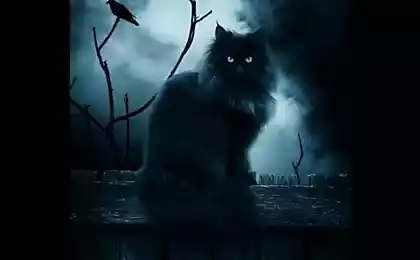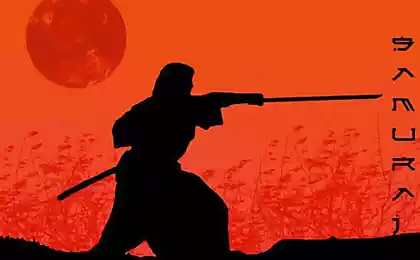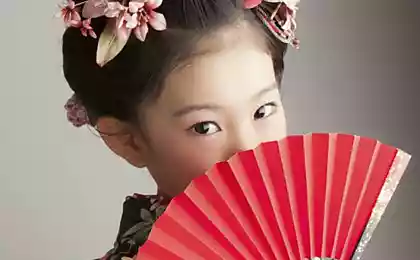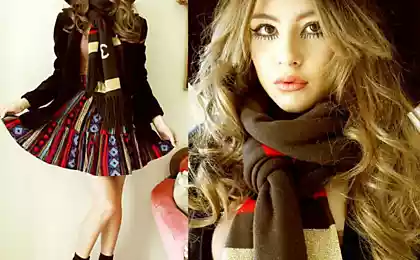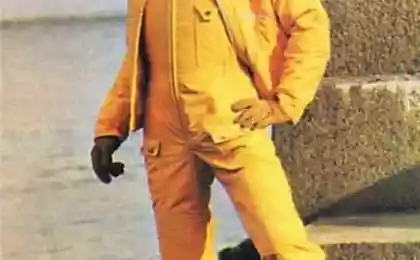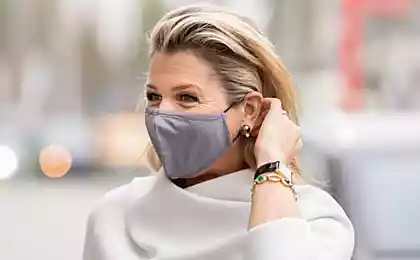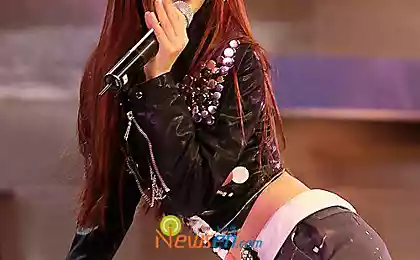1372
Exotic Japanese fashion.
10 pictures with letters. We expect the end. (Punctuation and spelling totally copyrights)
In the 20th century the fashion in Japan has changed dramatically: with teenagers gathering in many subcultural groups, new styles began to penetrate into the Japanese culture and the spread of the country. With the emergence of these movements were those who approve of them perceived as a fashionable trend, and the expression of their individuality, but there were others for whom such things - just a questionable attempt to stand out from the crowd.
Hence
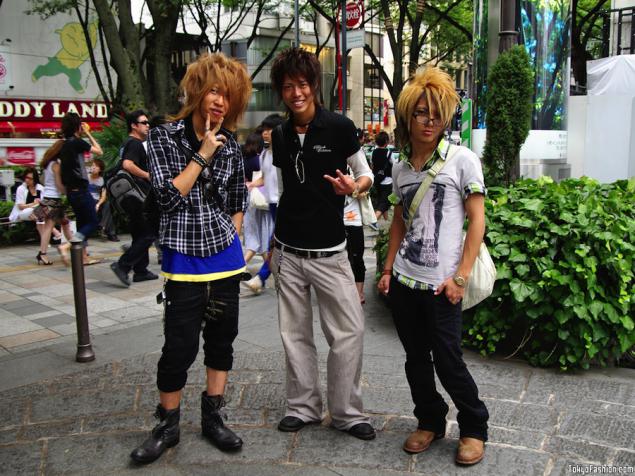
1. Sukeban.
In Japanese, «suke» - this is a woman, and «ban» means "the boss." Earlier Sukeban supporters were known that women have formed a gang that robbed and attacked people. For the first time these groups emerged in the 1960s, and "thank" for them to be a gang known as "bunches", which united young men who wanted to get to the yakuza - the Japanese mafia. All the formation Sukeban differ in the number participating, and the largest group of female delinquency has Kanto Alliance, which included about 20,000 girls. By the way, the warring groups often collide with each other in fights and battles. In addition, all associations Sukeban adhere to strict rules, the violation of which may be punished as a lynching and a brutal repression against the guilty, among which is the gentlest method of execution - burning cigarette. A dress code at Sukeban groups about the following: the top of the form of a sailor, and the bottom - long pleated skirt to the ankles. By the way, their shape, they sew to order.

2. Tekenokozoku.
Style Takenokozoku became one of the first to have attracted the attention of a plurality of subcultures to quarter Harajuku - the current Mecca of Japanese fashion. The style was formed in the 1970-1980's. Its main features were accessories neon shades, consisting of beads and bows and whistles that subcultures have always been with me.
Shop "Takenoko" became one of the first and main manufacturer of clothing for fans Takenokozoku style, which, incidentally, strongly influenced by traditional Japanese clothing. Costumes were sewn baggy and loose in bright blue, pink and purple tones with a few characters. At the feet of the young men were soft slippers for the convenience of dance floors. Many representatives Takenokozoku, gathering in large groups, included its Bumboks started to dance in the streets of Harajuku by popular music of the time.

3. Yankees and Bosozoku.
anda motorcyclists known as "Clans Speed" or "Bosozoku" were popular in Japan in the early 1960s. In the 1970s, women began to appear, and the formation of fans coolest motorcycles. The popularity of these associations affected showgirl Japanese police: According to them, about 26 000 people were held in various biker gangs, but in the 1980s the number of women in these groups gradually began to decline. Which, incidentally, did not prevent the girls come together even more. Thus was born the subculture of "Yankee", which can be seen as an echo of Bosozoku style and Sukeban. Their main attributes was sarashi - white matter, which is wrapped around the chest, dressing gown, like a cape and mask. And of course, the main "props" were scooters or motorcycles.
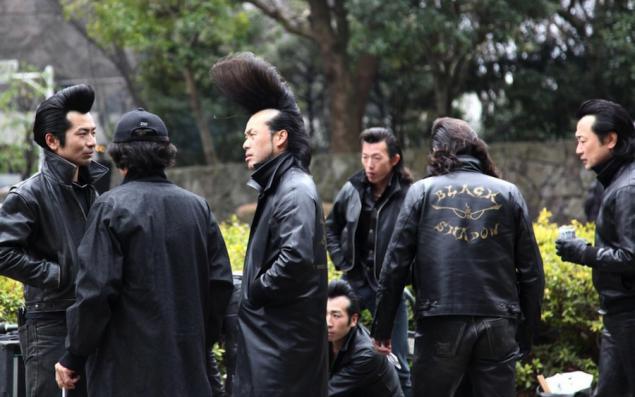
4. By Gal.
The word «gal» appeared in use Japanese in the 1980s, and it means "a girl who loves branded clothes." «Ko» comes from the Japanese word «kodomo», which means "the child».
For the first time this phrase was used in the 1990s in the media to describe the situation when the eighth-grader, meeting with an adult man earned $ 4 000. The representatives Co. gal trying to look as young as possible, using the cute baby accessories. You can recognize them for school uniforms with short skirts, deep tan, bleached hair and permanent high socks. Some, by the way, use the glue to the calf socks were kept properly. To find money for the fancy stuff representatives Co. Shibuya gal in areas sometimes use the services of paid dating and dating, though, it happens not so often, as they say the Japanese media. Style Co. Gal spread from Tokyo in Japan. Themed movies, magazines, television programs began to acquire more and more popular in society. In addition, the adherents of the style should never be seen without a mobile phone, besides, they were the first young people using mobile technology in Japan. Over time, during Co. Gal transformed into a subculture called «Hime Gal», where the first part means "princess." The main condition of this style is wearing a bright pink frilly things most expensive brands.
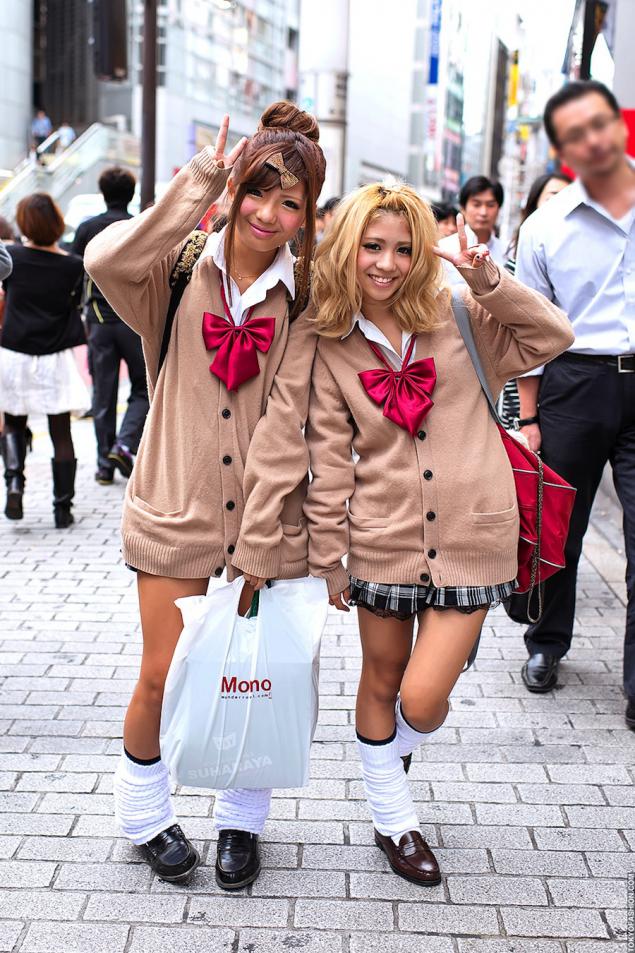
5. Gangur.
Light tan Co. Gal Gangur have gained extreme. Every week, representatives style solarium visit, but do not stop: in front of the release of the richly applied to the skin darker foundation. The literal translation of the word "Gangur" - "black face". Sunburn - this is not the most important attribute of the style. Representatives subculture always wear shoes with thick soles incredibly, mini-skirts, and the hair is decolorized or color in a rainbow of colors. Make-up - a separate conversation: Gangur not skimp on black or white eyeliner and lipstick on white, in addition, they wear blue contact lenses. Magazine «Egg» has placed on its cover Buriteri, recognized as the most famous representative of the subculture Gangur. This style was very popular among teenagers Shibuya areas, despite the fact that they are often subjected to harassment and public condemnation. By the end of 2001 the popularity of the style began to wane, and the solarium gradually began to close.
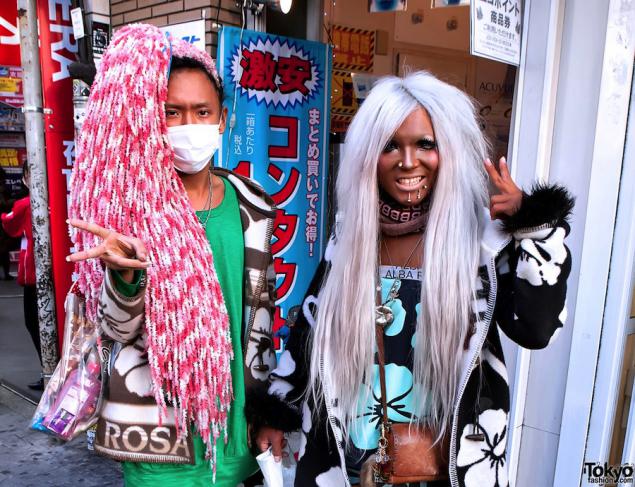
6. Manba.
Style Manba largely similar to Gonguro. The word came from the name of Japanese ugly witch Yamanba (media representatives often called Gangur Yamanba). Because of the hazard of frequent visits to tanning salons Manba use very dark a foundation, hence the parallels with the witch. Gathering in a group, adherents of the style dance music Para or simply move in sync to techno. Representatives Manba created formation Gal, the most popular of them - Angelique. It includes guys who spend their free time in clubs Manba and adopt their style. They are called "Central Boys" (in honor of the main street of Shibuya). Clothing and accessories Manba always eccentric and bright. Cosmetics are also not spared: very white lips and huge white circles, besides, teenagers glued directly to the person "blestyashki" and stickers, their faces framed by hair of all shades of the rainbow.
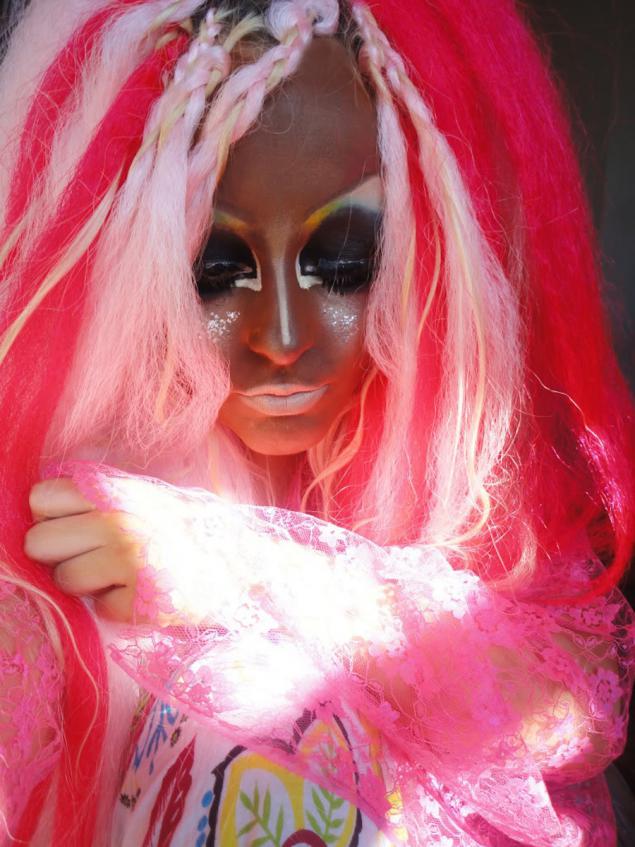
7. kigurumi.
Style kigurumi paused briefly in the Japanese fashion industry - from 2003 to 2004 years. And there was a very strange fashion phenomenon. Girls who spend their time in the areas of Shibuya, hanging around, in need of comfortable clothes, and so they chose the cheap sports clothing in the form of animals, which they buy at the store "Everything for the party." Also Pikachu costumes or Winnie the Pooh, representatives kigurumi wore cute accessories in the form of animals, purses, earrings and others. In addition, they used the same make-up as Manba.
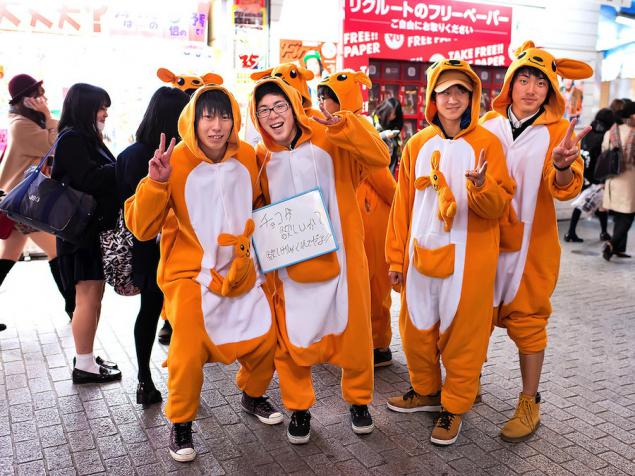
8. naked Gal.
Naked - it's indie label, created in 1983, which in Japan has been a lot of fans. Hence came the name of the style - a nude gal, which first appeared in the journal «Takarajima». Naked Gal involves wearing vintage clothing. Representatives of subculture often wore long-sleeved shirts, shoes with thick soles and socks. The term "naked Gal" has not always had a positive coloring, on the contrary, his fans associated with the pesky groupies. In 1989, the label naked ceased to exist.
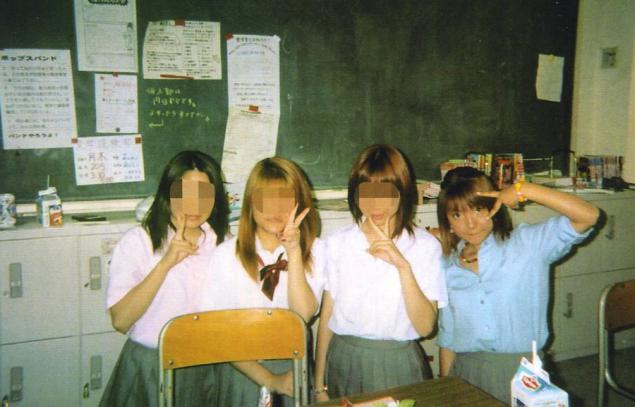
9. Lolita.
Lolita - the most popular subculture of Japan, which is widely spread abroad. Today there are a huge number of brands Lolita, for example, Baby the Stars Shine Bright, Metamorphose, Angelic Pretty. Style Nabokov character gained popularity in the late 1990s and, like naked, appeared under the influence of music. Gothic record company in Japan, has opened a new direction in music - visual kei, which is, in fact, inspired by the style upgrade to its Gothic Lolita options. Admirers style Visual kei refers to those groups who believe that the complex make-up, more like a make-up and costumes - it's a great way to show your individuality. The name came after a musician from the group Mana Malice Mizer named his clothing line "Elegant Gothic Lolita". This was followed by the popular magazine and run - Lolita Bible - «Gothic».
There are several subspecies of Lolitas. Is a mixture of Gothic and Rococo clothes prefer dark colors. "Sweet" Lolita choose pastel colors and lace and bows. A lover of punk combined with frills chains. In addition, there is a trend of style, which is called «Wa». They, in turn, prefer traditional Japanese clothes - kimono - embroidered with hieroglyphics. Accessories, popular for all kinds of Lolitas include hats, hoods, umbrellas, platform shoes with ties and socks with ruffles.
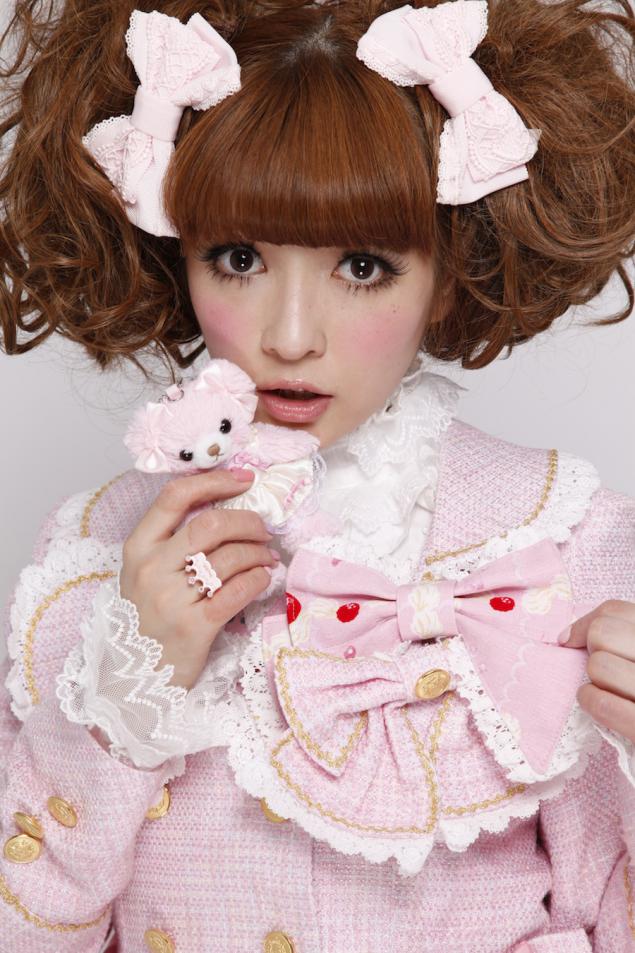
10. Decorah.
The decor - a Japanese street style is extremely popular today. In 1997 he published the magazine «FRUiTS», who published pictures of the most prominent representatives of the fashion streets of Japan. Aki Kobayashi, the first model, who has appeared on the cover of this magazine, shared in a column about how she created her own personal style and clothing.
After the «FRUiTS», the girls followed the example of Aki, and also began to realize their creative abilities. The style eventually became known as the decor, and his followers began to sell their products in the Japanese Harajuku quarter. Despite the fact that every outfit adherents Decor is unique tendency to brightness and extreme eccentricity inherent in all. Girls decor mesh over insane amounts of plastic ornaments and pins, wear neon colored skirts and knee-high, and sometimes even wear gauze bandages, which are themselves, and painting the.
_______________
That's all I wanted to say. All good and nice looking)
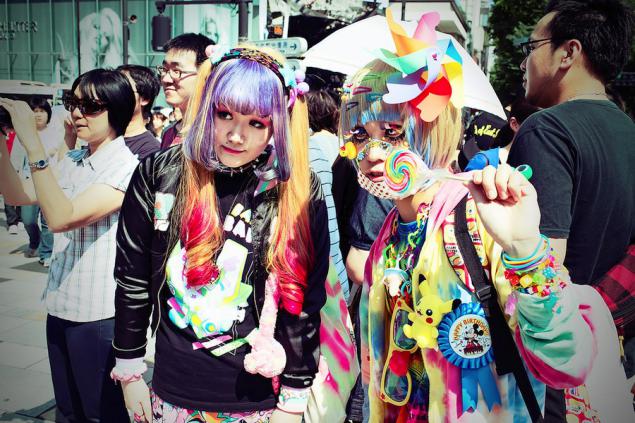
Source:
In the 20th century the fashion in Japan has changed dramatically: with teenagers gathering in many subcultural groups, new styles began to penetrate into the Japanese culture and the spread of the country. With the emergence of these movements were those who approve of them perceived as a fashionable trend, and the expression of their individuality, but there were others for whom such things - just a questionable attempt to stand out from the crowd.
Hence

1. Sukeban.
In Japanese, «suke» - this is a woman, and «ban» means "the boss." Earlier Sukeban supporters were known that women have formed a gang that robbed and attacked people. For the first time these groups emerged in the 1960s, and "thank" for them to be a gang known as "bunches", which united young men who wanted to get to the yakuza - the Japanese mafia. All the formation Sukeban differ in the number participating, and the largest group of female delinquency has Kanto Alliance, which included about 20,000 girls. By the way, the warring groups often collide with each other in fights and battles. In addition, all associations Sukeban adhere to strict rules, the violation of which may be punished as a lynching and a brutal repression against the guilty, among which is the gentlest method of execution - burning cigarette. A dress code at Sukeban groups about the following: the top of the form of a sailor, and the bottom - long pleated skirt to the ankles. By the way, their shape, they sew to order.

2. Tekenokozoku.
Style Takenokozoku became one of the first to have attracted the attention of a plurality of subcultures to quarter Harajuku - the current Mecca of Japanese fashion. The style was formed in the 1970-1980's. Its main features were accessories neon shades, consisting of beads and bows and whistles that subcultures have always been with me.
Shop "Takenoko" became one of the first and main manufacturer of clothing for fans Takenokozoku style, which, incidentally, strongly influenced by traditional Japanese clothing. Costumes were sewn baggy and loose in bright blue, pink and purple tones with a few characters. At the feet of the young men were soft slippers for the convenience of dance floors. Many representatives Takenokozoku, gathering in large groups, included its Bumboks started to dance in the streets of Harajuku by popular music of the time.

3. Yankees and Bosozoku.
anda motorcyclists known as "Clans Speed" or "Bosozoku" were popular in Japan in the early 1960s. In the 1970s, women began to appear, and the formation of fans coolest motorcycles. The popularity of these associations affected showgirl Japanese police: According to them, about 26 000 people were held in various biker gangs, but in the 1980s the number of women in these groups gradually began to decline. Which, incidentally, did not prevent the girls come together even more. Thus was born the subculture of "Yankee", which can be seen as an echo of Bosozoku style and Sukeban. Their main attributes was sarashi - white matter, which is wrapped around the chest, dressing gown, like a cape and mask. And of course, the main "props" were scooters or motorcycles.

4. By Gal.
The word «gal» appeared in use Japanese in the 1980s, and it means "a girl who loves branded clothes." «Ko» comes from the Japanese word «kodomo», which means "the child».
For the first time this phrase was used in the 1990s in the media to describe the situation when the eighth-grader, meeting with an adult man earned $ 4 000. The representatives Co. gal trying to look as young as possible, using the cute baby accessories. You can recognize them for school uniforms with short skirts, deep tan, bleached hair and permanent high socks. Some, by the way, use the glue to the calf socks were kept properly. To find money for the fancy stuff representatives Co. Shibuya gal in areas sometimes use the services of paid dating and dating, though, it happens not so often, as they say the Japanese media. Style Co. Gal spread from Tokyo in Japan. Themed movies, magazines, television programs began to acquire more and more popular in society. In addition, the adherents of the style should never be seen without a mobile phone, besides, they were the first young people using mobile technology in Japan. Over time, during Co. Gal transformed into a subculture called «Hime Gal», where the first part means "princess." The main condition of this style is wearing a bright pink frilly things most expensive brands.

5. Gangur.
Light tan Co. Gal Gangur have gained extreme. Every week, representatives style solarium visit, but do not stop: in front of the release of the richly applied to the skin darker foundation. The literal translation of the word "Gangur" - "black face". Sunburn - this is not the most important attribute of the style. Representatives subculture always wear shoes with thick soles incredibly, mini-skirts, and the hair is decolorized or color in a rainbow of colors. Make-up - a separate conversation: Gangur not skimp on black or white eyeliner and lipstick on white, in addition, they wear blue contact lenses. Magazine «Egg» has placed on its cover Buriteri, recognized as the most famous representative of the subculture Gangur. This style was very popular among teenagers Shibuya areas, despite the fact that they are often subjected to harassment and public condemnation. By the end of 2001 the popularity of the style began to wane, and the solarium gradually began to close.

6. Manba.
Style Manba largely similar to Gonguro. The word came from the name of Japanese ugly witch Yamanba (media representatives often called Gangur Yamanba). Because of the hazard of frequent visits to tanning salons Manba use very dark a foundation, hence the parallels with the witch. Gathering in a group, adherents of the style dance music Para or simply move in sync to techno. Representatives Manba created formation Gal, the most popular of them - Angelique. It includes guys who spend their free time in clubs Manba and adopt their style. They are called "Central Boys" (in honor of the main street of Shibuya). Clothing and accessories Manba always eccentric and bright. Cosmetics are also not spared: very white lips and huge white circles, besides, teenagers glued directly to the person "blestyashki" and stickers, their faces framed by hair of all shades of the rainbow.

7. kigurumi.
Style kigurumi paused briefly in the Japanese fashion industry - from 2003 to 2004 years. And there was a very strange fashion phenomenon. Girls who spend their time in the areas of Shibuya, hanging around, in need of comfortable clothes, and so they chose the cheap sports clothing in the form of animals, which they buy at the store "Everything for the party." Also Pikachu costumes or Winnie the Pooh, representatives kigurumi wore cute accessories in the form of animals, purses, earrings and others. In addition, they used the same make-up as Manba.

8. naked Gal.
Naked - it's indie label, created in 1983, which in Japan has been a lot of fans. Hence came the name of the style - a nude gal, which first appeared in the journal «Takarajima». Naked Gal involves wearing vintage clothing. Representatives of subculture often wore long-sleeved shirts, shoes with thick soles and socks. The term "naked Gal" has not always had a positive coloring, on the contrary, his fans associated with the pesky groupies. In 1989, the label naked ceased to exist.

9. Lolita.
Lolita - the most popular subculture of Japan, which is widely spread abroad. Today there are a huge number of brands Lolita, for example, Baby the Stars Shine Bright, Metamorphose, Angelic Pretty. Style Nabokov character gained popularity in the late 1990s and, like naked, appeared under the influence of music. Gothic record company in Japan, has opened a new direction in music - visual kei, which is, in fact, inspired by the style upgrade to its Gothic Lolita options. Admirers style Visual kei refers to those groups who believe that the complex make-up, more like a make-up and costumes - it's a great way to show your individuality. The name came after a musician from the group Mana Malice Mizer named his clothing line "Elegant Gothic Lolita". This was followed by the popular magazine and run - Lolita Bible - «Gothic».
There are several subspecies of Lolitas. Is a mixture of Gothic and Rococo clothes prefer dark colors. "Sweet" Lolita choose pastel colors and lace and bows. A lover of punk combined with frills chains. In addition, there is a trend of style, which is called «Wa». They, in turn, prefer traditional Japanese clothes - kimono - embroidered with hieroglyphics. Accessories, popular for all kinds of Lolitas include hats, hoods, umbrellas, platform shoes with ties and socks with ruffles.

10. Decorah.
The decor - a Japanese street style is extremely popular today. In 1997 he published the magazine «FRUiTS», who published pictures of the most prominent representatives of the fashion streets of Japan. Aki Kobayashi, the first model, who has appeared on the cover of this magazine, shared in a column about how she created her own personal style and clothing.
After the «FRUiTS», the girls followed the example of Aki, and also began to realize their creative abilities. The style eventually became known as the decor, and his followers began to sell their products in the Japanese Harajuku quarter. Despite the fact that every outfit adherents Decor is unique tendency to brightness and extreme eccentricity inherent in all. Girls decor mesh over insane amounts of plastic ornaments and pins, wear neon colored skirts and knee-high, and sometimes even wear gauze bandages, which are themselves, and painting the.
_______________
That's all I wanted to say. All good and nice looking)

Source:
